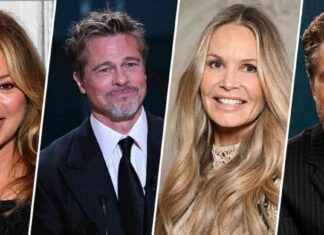Diplomatic marathon of Japanese Prime Minister Fumio Kishida. In less than a week it has hosted a historic summit to restore cracked ties with neighboring South Korea and has received German Chancellor Olaf Scholz in Tokyo, with whom it has pledged to boost economic and security cooperation. He has also traveled to New Delhi to strengthen ties with Narendra Modi in the face of China’s influence in the region. And this Tuesday, by surprise, Kishida has appeared at the kyiv central station after taking a train from Poland.
The trip of the Japanese to Ukraine was not on the official agenda, who has been the last G7 leader who was missing to set foot in the country besieged by the Russian invasion and meet with President Volodimir Zelenski.
Kishida, who also visited the Ukrainian martyr town of Bucha, on the outskirts of Kiev and a symbol of the atrocities of the Russian occupation, has also become the first Japanese leader to visit an active war zone since World War II. Ukraine celebrated the “historic visit” of the Japanese, as a “gesture of solidarity” from the Asian country. The prime minister of the world’s third-largest economy is getting used to breaking precedents, such as when he ushered in a historic rearmament of Japan this year after approving its biggest military budget in decades.
The Japanese are moving nimbly away from home to try to be a major player on the global geopolitical chessboard. His presence and voice in international forums and bilateral summits has multiplied. At the beginning of this year he already made a leap to Europe visiting France, Italy, the United Kingdom. Later, he crossed the pond to see Joe Biden in Washington and Justin Trudeau in Canada. At the end of May he will host the G7 leaders’ summit in the city of Hiroshima.
Kishida’s trip to Ukraine, in addition to the photo with Zelenski and the promises of more aid to Kiev, makes visible the latent divisions towards the war that exists between the powers of Northeast Asia: Japan and South Korea strengthen their alliance with the United States United and join the West in sanctions against Russia, while China positions itself as Putin’s big political supporter after President Xi Jinping’s trip to Moscow this week.
This Tuesday it coincided that, while Xi was chatting with Putin, the Japanese Kishida did the same with Zelenski. “We hope Japan can do more to de-escalate the situation rather than the other way around,” Chinese Foreign Ministry spokesman Wang Wenbin told Kishida from Beijing. A few hours earlier, two Russian bombers, Tupolev Tu-95MS aircraft, capable of carrying nuclear weapons, were flying over the Sea of ??Japan.
In February, on the eve of the first anniversary of the invasion, Japan pledged $5.5 billion in humanitarian aid to Ukraine, four times its previous contributions. So far, the Asian nation has contributed more than $7 billion to Zelensky’s country and has accepted more than 2,000 displaced Ukrainians.
Tokyo has joined international sanctions but is unable to provide military support to kyiv because of self-imposed rules in its postwar constitution that do not allow offensive weapons to a country embroiled in conflict. Instead, many voices have been heard in Tokyo of late that the growing popular support for Ukraine may push lawmakers to debate whether to lift that rule.
According to the criteria of The Trust Project






